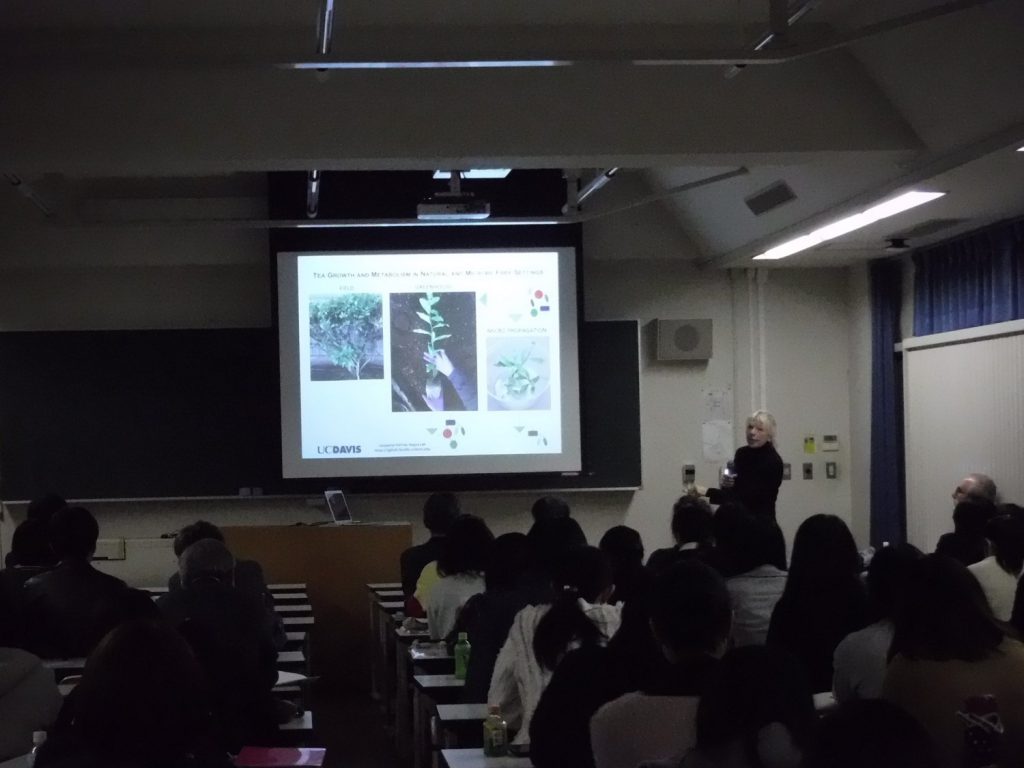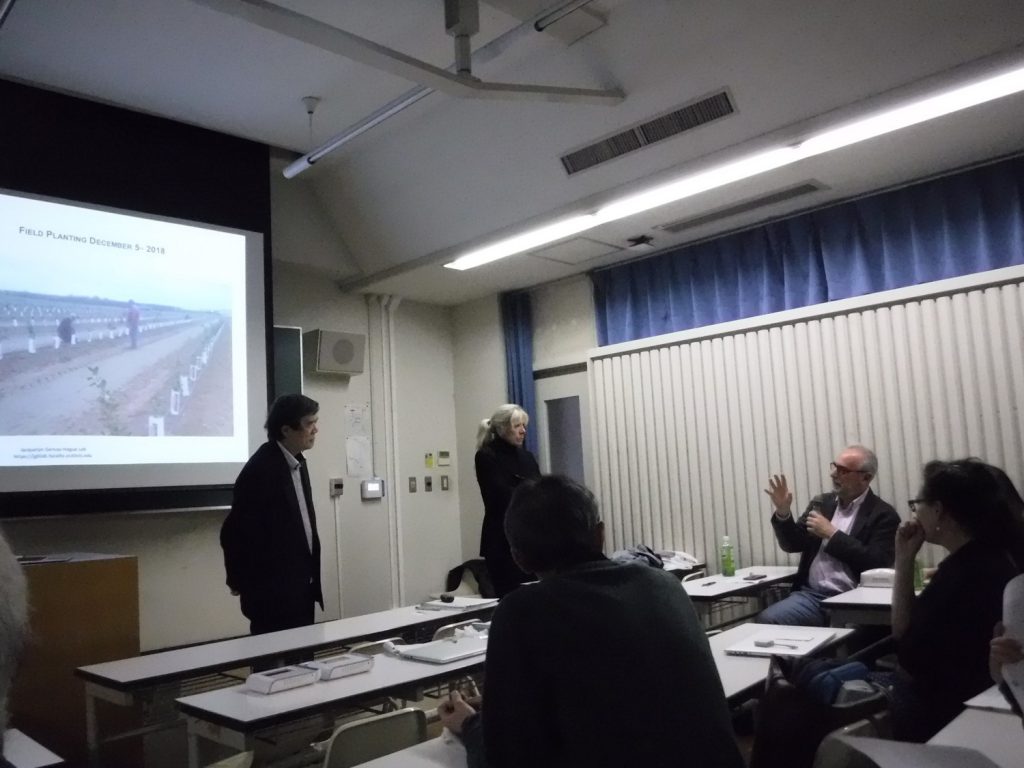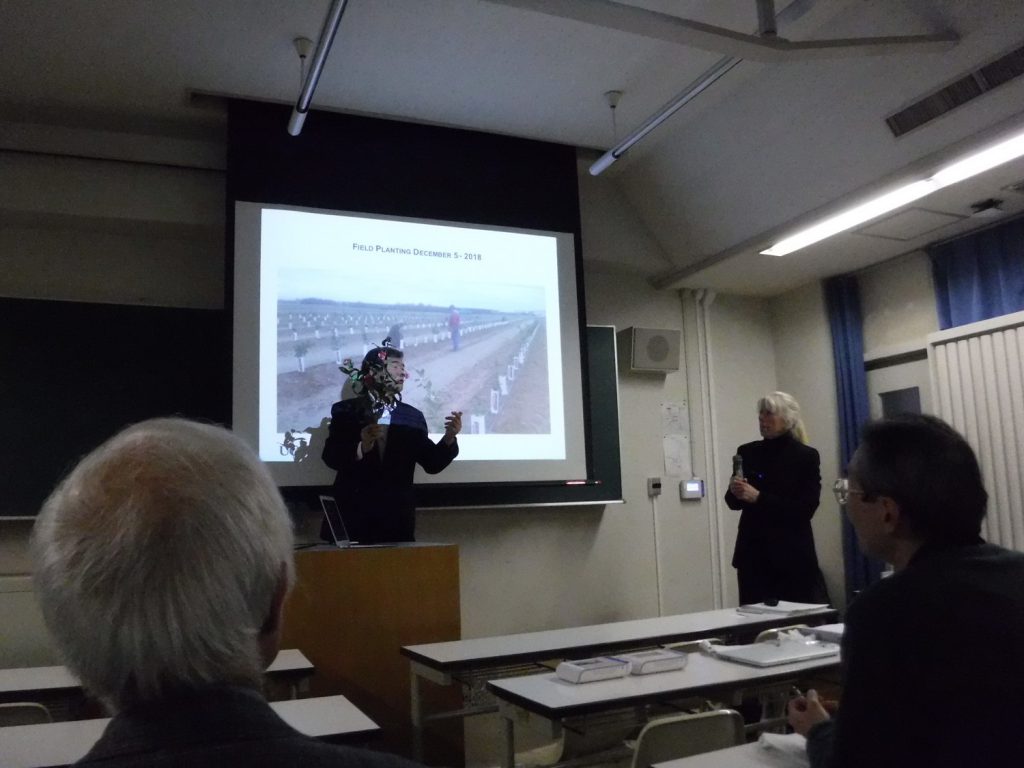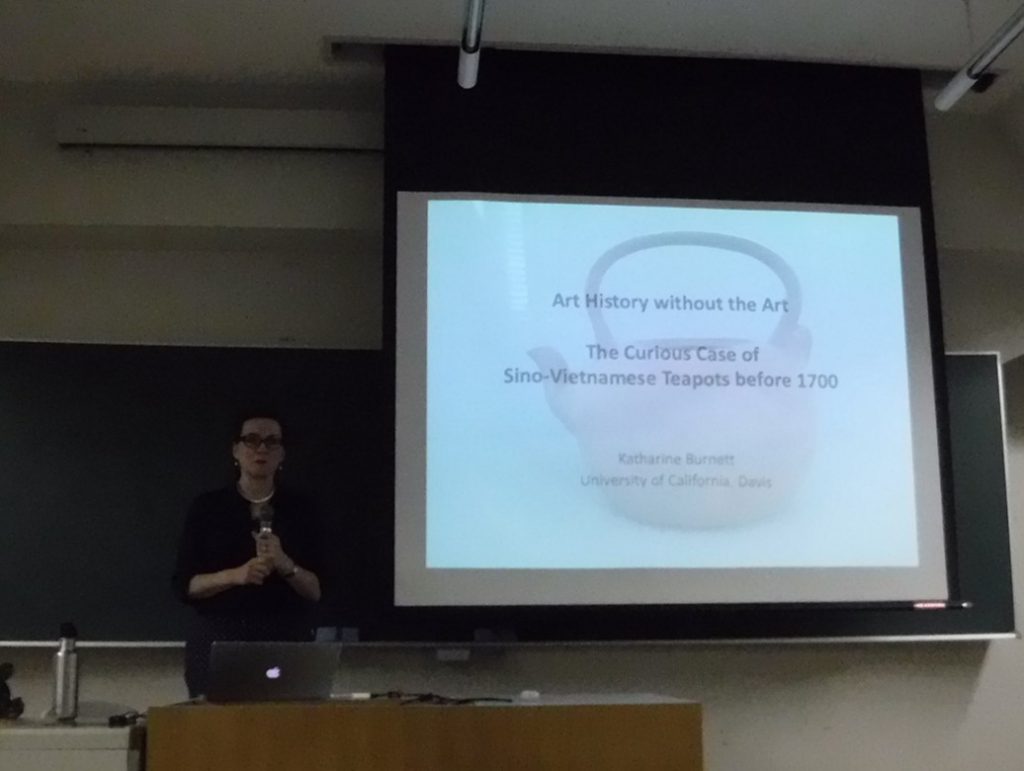On 12th December 2018, Prof. Gervay-Hague and Prof. Burnett presented special lectures in University of Shizuoka. Both the lectures belong to the Global Tea Initiative, established in University of California, Davis. Prof. Burnett is famous among tea lovers who read World Tea News, which reported the third symposium of World Tea Initiative hold on February 2018 in UC Davis on its post.
This special seminar was organized by Dean/Prof. Hirokazu Kobayashi and Director/Prof. Yoriyuki Nakamura in University of Shizuoka, based on the partnership between the University of California at Davis and University of Shizuoka.
The lecture room was full of students and some tea scientists as shown in the picture below. The largest tea production in Shizuoka prefecture would make the students have interests for tea industry.
Prof. Gervay-Hague made a presentation about tea production in California.

In the presentation, she implied the significance of mycorrhizal symbiosis on the growth of tea plants. As indicated in many articles [569-572], mycorrhizal symbiosis can enhance the growth of tea plants via improvement of nutrient uptake.

Discussion between Prof Gervay-Hague and Prof. David L. Wank, belonging to Sophia University.
Professor Kobayashi talked about the additional story that Camellia japonica, called as “Yamatsubaki” in Japanese, could grow in California, implying same genus of Camellia sinensis can also grow under the same conditions.

The organizer Prof. Kobayashi explained the additional story that Camellia japonica called as “Tsubaki” (or “Yamatsubaki”) could grow in California, with displaying a blanch of Camellia japonica.
It is reported that the inoculation of commercial AMF(arbuscular mycorrhizal fungi) and a consortium of bacteria and fungi could increase number of flowers and foliage diameter of Camellia japonica respectively, while the AMF poorly colonized the roots of Camellia japonica[573].
I’m very curious with the infection and colonization mechanism of mycorrhizal fungi on/in the roots of tea plants. What are the key substances? In the presentation, Prof. Garvey-Hague told her speculation that the key substances seem to be some lipids or saccharides.
Prof. Burnett presented a lecture about the history of teapot in Vietnam affected by Chinese culture.

I’m also very curious with her presentation. I think her research could be a hint for me to understand the diversity of teapots produced in various regions in Japan. Especially some regions for teapots production have been affected by China and other countries, I think. (e.g. “Mumyoyaki” pottery in Sado Island)
As an amateur tea scientist born in Shizuoka, it was my pleasure that the seminar of Global Tea Initiative was held in University of Shizuoka. Hopefully the collaboration works between UC Davis and University of Shizuoka will go on and fulfill many scientific achievements in various fields.
< Information about related research activities and reserarchers >
- Led by University of California at Davis
- Founding Director : Professor Katharine Burnett in UC Davis
- Activities : Annual symposium, Tea Careers Networking Event etc.
(2) Researchers in the Seminar
- Prof. Katharine BURNETT (Dept. of Art and Art History, UC Davis)
- Prof. Jacqulyn GERVAY HAGUE (Dept. of Chemistry, UC Davis)
- Prof. Davi L. WANK (GPGS Faculty, Sophia University)
- Prof. Hirokazu Kobayashi (Dean of Graduate Division of Nutritional and Environmental Sciences, University of Shizuoka)
- Prof. Yoriyuki Nakamura (Director of Tea Science Center, University of Shizuoka)
- Prof. Hisao TOMIZAWA (University of Shizuoka)
- Project Assistant Prof. Daisuke AWAKURA (University of Shizuoka)
< References >
[569] Kubota,M. (2006) : Stratagies on symbiosis between planta and arbuscular mycorrhizal fungi and their bioprotection, Root Research, 15:111-118.
[570] Gupta, R.K. and Sharma, C. (2010) : Diversity of arbuscular mycorrhizal fungi in Camellia sinensis in Uttarakhand State, India, African Journal of Biotechnology, 9:5313-5319.
[571] Singh, S. et al. (2010) : Enhancement in growth and quality parameters of tea [Camellia sinensis(L.) O. Kuntze] through inoculation with arbuscular mycorrhizal fungi in an acid soil, Biology and Fertility of Soils, 46:427-433.
[572] Mwangi, M.W. et al. (2009) : Effect of Trichoderma harjanum and arbuscular mycorrhizal fungi n growth in Tomato (Lycopersicum esculenutum MILL) seedlings, Napier (Pennisetum purpureum L) and tea (Camellia sinensis L.) cuttings, Tropical and Subtropical Agroecosystems, 11:423-429.
[573] Berruti, A. et al. (2013) : Application of nonspecific commercial AMF inocula results in poor mycorrhization in Camellia japonica L., Symbiosis, 61:63-76.
